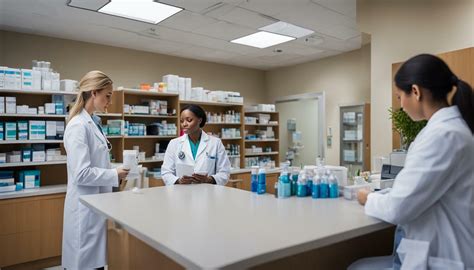Pursuing a career in pharmacy requires candidates to complete a considerable amount of education, including undergraduate study and specialized training at a pharmacy school. The duration of pharmacy school after undergraduate studies can vary depending on the institution, program type, and individual circumstances. This article delves into the intricacies of pharmacy school, exploring the academic timeline, program structure, and factors that influence its duration.

Academic Timeline for Pharmacy School
The traditional path to becoming a pharmacist involves earning a Bachelor of Science (B.S.) or Bachelor of Arts (B.A.) degree in pre-pharmacy or a related field before applying to pharmacy school. The length of undergraduate studies typically spans four years.
Upon gaining admission to pharmacy school, students embark on a rigorous four-year Doctor of Pharmacy (Pharm.D.) degree program. This program encompasses coursework in pharmaceutical sciences, patient care, drug therapy, and clinical rotations.
Factors Influencing Duration of Pharmacy School
While pharmacy school typically takes eight years to complete, several factors can impact its duration:
-
Accelerated Programs: Some institutions offer accelerated pharmacy programs that allow students to complete their Pharm.D. degree in as little as six to seven years.
-
Part-Time Studies: Students pursuing pharmacy school part-time often extend their program’s duration beyond the traditional eight years.
-
Academic Performance: Maintaining a strong academic record can expedite progress through the program, reducing the overall time spent in pharmacy school.
-
Research and Elective Courses: Students who opt to pursue research projects or take additional elective courses may extend their program’s duration.
Program Structure of Pharmacy School
Pharmacy school curricula are designed to provide students with a comprehensive understanding of pharmaceutical sciences and prepare them for professional practice. The curriculum typically includes:
-
First Year: Introductory pharmacy courses, basic sciences, and foundational pharmacology.
-
Second Year: Advanced pharmacology, pharmaceutics, and clinical pharmacy.
-
Third Year: Pharmacy practice, patient care, and drug therapy rotations.
-
Fourth Year: Capstone experiences, including advanced practice rotations and research projects.
Common Mistakes to Avoid
Avoid these pitfalls to minimize the duration of pharmacy school:
-
Poor Academic Performance: Maintain a high GPA to avoid remediation or grade forgiveness.
-
Lack of Planning: Create a detailed academic plan to optimize course scheduling and minimize delays.
-
Incomplete Applications: Ensure all application materials are submitted promptly and meet program requirements.
-
Underestimating Program Rigor: Be prepared for the intense workload and academic challenges of pharmacy school.
Pros and Cons of Pharmacy School
Pros:
- Prestigious and in-demand profession with high earning potential.
- Opportunities for specialization in various pharmacy practice areas.
- Ability to make a meaningful impact on patients’ health and well-being.
- Job security and career stability.
Cons:
- Lengthy and demanding educational journey.
- Requires significant financial investment.
- Competitive admission process with limited spots.
- Limited career advancement potential beyond clinical practice.
Conclusion
The duration of pharmacy school after undergraduate studies generally spans eight years. However, factors such as accelerated programs, part-time studies, academic performance, and additional coursework can influence the overall time commitment. By understanding the program structure, common pitfalls to avoid, and the pros and cons of pharmacy school, prospective students can make informed decisions about their educational path.
Additional Tables:
| Program Type | Duration |
|---|---|
| Traditional Pharmacy School | 8 years |
| Accelerated Pharmacy School | 6-7 years |
| Part-Time Pharmacy School | 9+ years |
| Year of Pharmacy School | Core Coursework |
|---|---|
| First Year | Introductory Pharmacy, Basic Sciences, Pharmacology |
| Second Year | Advanced Pharmacology, Pharmaceutics, Clinical Pharmacy |
| Third Year | Pharmacy Practice, Patient Care, Drug Therapy Rotations |
| Fourth Year | Capstone Experiences, Advanced Practice Rotations, Research Projects |
| Factor | Impact on Duration |
|---|---|
| Academic Performance | Faster progress with higher GPA |
| Research and Elective Courses | Extension of program duration |
| Part-Time Studies | Extended program duration |
| Accelerated Programs | Shortened program duration |
